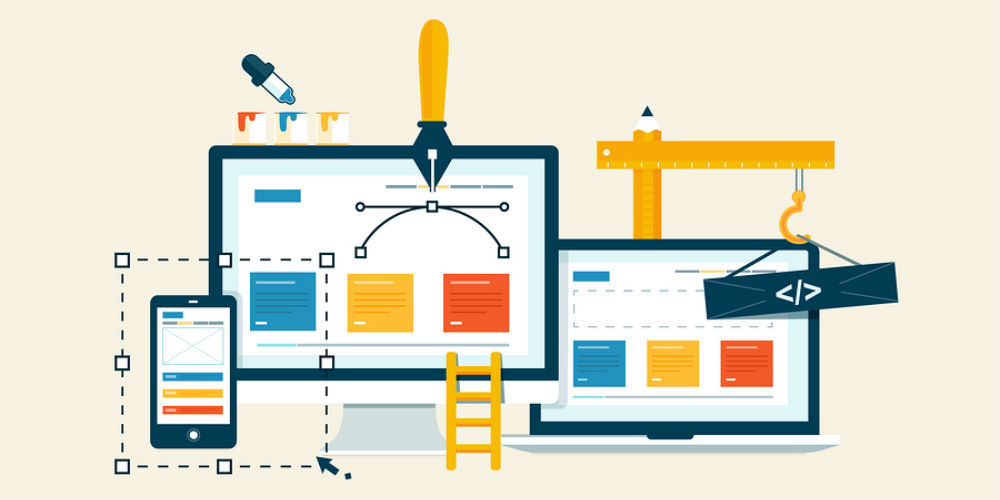The best websites are never finished

Once your credit union’s spiffy, super-fresh new website goes live, you can raise a toast and cross website stuff off your to-do list for a few years, right?
Not so fast. A new website is only fresh for a brief moment in time. The world, your members, and what they want and need are constantly changing, and your website needs to be able to keep up.
That’s the bad news. Websites are never done.
But that’s the good news, too. Pixels aren’t permanent ink; you can change anything at any time. A great website changes, adapts, expands and evolves constantly.
Start with your purpose and strategy
A great website is the hub and the center of carrying out your purpose and enabling long-term growth. And hubs can’t stand still.
When you’re planning a website project, make future flexibility a top priority. Design for easy changes to colors, logos, navigation, interfaces, and capabilities.
Expect the unexpected. Maybe you’ll want to make your website bilingual later on. Or maybe aliens will land and you’ll need to make the interface a little more tentacle-friendly.
Plan for easy future integrations and experimentation, even for stuff you haven’t heard of yet. Can you try out new kinds of analytics, do A/B testing, play around with new landing pages, and easily integrate things like calendars, calculators, maps, and more?
Pick a future-proof platform
The old way is to blow up your website and start over with a new vendor, platform, and learning curve every three years or so.
The new way is to build your website for the last time on a major flexible platform you’ll never have to change again.
Now you can focus your budget, time, and energy on continuous ongoing improvements rather than “burn it all down and start over” every few years.
Suddenly, you’re free to keep pace with changes, respond quickly to new and changing member needs, add new capabilities, and experiment to learn what works.
Futureproofing is why we build credit union websites with WordPress, using secure, super-speedy managed hosting. WordPress powers over 40% of the world’s websites, so you can count on WordPress sticking around for the long haul.
And with thousands of busy developers all over the world, the possibilities for adding new capabilities with plugins, integrations, and custom features are endless.
Don’t wait: iterate and evaluate
Once your website launches, don’t let it sit around. Start changing stuff right away. Work with your website every single day, even several times a day.
Don’t wait for budget time, or for needs to appear. Get ahead of the curve. Schedule regular reviews at least once a quarter with a small core group of stakeholders to go over feedback, new needs, nice-to-haves, and future needs and plans.
Plan and budget money and time for at least one relatively major update or addition every year, with nearly constant minor updates.
And close the loop with evaluation. What was the feedback? Did loans go up? Which alternative worked the best? What do the Analytics numbers say?
Take what you’ve learned, apply it, and see what happens; that’s how you evolve.
Experiment
Set aside a portion of your funds and time for experiments. Try new things, see how they work out, then make them mainstream, kill them off, or make changes and try again.
Push the limits, and don’t fear failure if there’s something you can learn.
Got a crazy idea? Ask your web developers; we love finding ways to make crazy ideas work. Or maybe there’s a not-so-crazy idea that could work even better.
Yes, experimenting on top of everything else is tough, but it’s the one thing that really separates the best websites from stale online brochures.
Raise your content game
Extend that continuous improvement philosophy to your content; all those words, pictures, and videos in your website, and in your social media and marketing.
First get it right. Regularly scan for broken links and technical errors, and scrub every page for errors and outdated info.
Then slash and simplify. Cut the cruft wherever you find it. Edit ruthlessly to get to the point faster – most credit union websites have around 150 pages; few actually need more than 100.
Next, punch up your highest-value pages for SEO, and monitor and update them regularly.
And if you’re doing a blog, do it right, with frequently updated, compelling, and authentic local content.
Integrate
Don’t limit yourself to your website; work to improve integration and interfaces for all your touchpoints. Your apps, online banking, loan and account opening, and social media should all work together and integrate smoothly. Work with your website developers and connect with your other vendors to inch closer to this goal.
Get smarter every day
Don’t forget to continuously improve your web team’s skills, too. Ask your developers how things work (we love to share!) and how you can learn more about the innards of your website.
The more you know, the more you’ll know what’s possible, and the better you can keep up.
Steal shamelessly
Igor Stravinsky once said, “A good composer does not imitate; he steals.”
Keep your eyes wide open for inspiration. Every website you visit has something to teach you, and things to think about. Look for great ideas to try, and terrible mistakes to avoid. Sometimes there’s even a great idea hiding under a rotten implementation.
Embrace the Evolution Revolution
There’s an old saying, “the only constant is change.” It’s true no matter what you’re talking about, but the pace is really breathtaking in the online world.
Lean into that speed and that state of constant flux. Embrace uncertainty and plan for the unknowable on your website, and you, your credit union, and your members will be well-equipped for whatever’s next.

